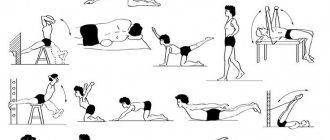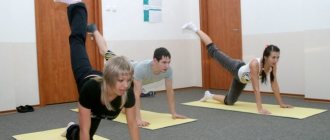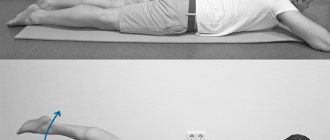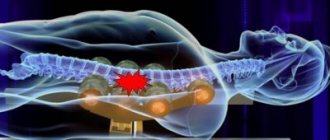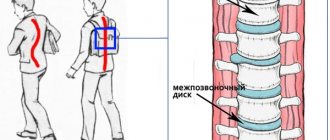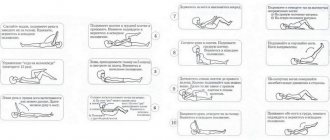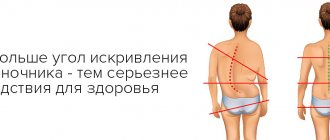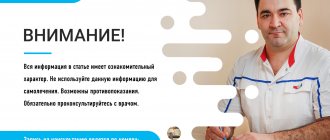In the generally accepted understanding, body flexibility is the prerogative of yogis, gymnasts and circus acrobats. An ordinary person does not need to do the splits, lotus position, or touch his big toe to his earlobe. But flexibility, it turns out, is not just the ability to perform gymnastic tricks. Posture, a harmonious, even silhouette and the health of the spine depend on how flexible the back is.
Exercises for back flexibility
Why the back should not only be strong
A healthy, fully developed back should bend, bend, and twist without problems. If, in the absence of spinal diseases, you have problems with back mobility and limited movement, it means that rigid, inelastic muscles do not allow you to achieve the full range of motion. And it will get worse. The natural flexibility inherent in the human spine will gradually be lost, the back will be in a static position most of the time, which will lead to the development of spinal diseases and atrophy of the spinal muscles.
By the way. Among young people, especially men, there is an opinion that the back must be strong. This is partly true for those who “swing”, since in their case the back serves as a lever that transmits force to the muscles during a strength exercise. But along with strength, the back must have flexibility. Otherwise, it is very easy to “break it” during strength training.
It is important that your back is not only strong, but also flexible.
The back muscles must be strong for another reason, to protect the spine from injury. Strong does not mean pumped up, but elastic, stretched, flexible. If a person cannot bend over and reach, bending over, with his hand to the floor, it is not spinal diseases that are to blame, even if they are present, but the rigid, undeveloped muscles of the back and abs.
Back flexibility is achieved through muscle training
Important! A healthy spine bends forward, extends backward, tilts the body laterally, and twists in both directions.
If the muscles are not trained, not flexible, this gives rise to a lack of movement in the full range, resulting from this situation, problems with posture, pain and various back diseases.
If the back muscles are not trained, then the risk of developing spinal diseases is high.
The spine is the axial frame of the body, complexly designed and providing in one way or another the support and vital functions of many organs, almost the entire body. But with age and under the influence of stress, its functioning is impaired. There is a crunch in the cervical vertebrae, lower back pain, and limited movement. All of these problems can be prevented or their occurrence delayed for a long time if you regularly do exercises to stretch and increase the flexibility of the spine.
By doing exercises, you can prevent the occurrence of crunching of the vertebrae and back pain
- A person constantly strains his back muscles.
- Moves little.
- Chooses sedentary work.
- Lifts weights, including in the gym.
- Doesn't eat right.
- Doesn't maintain good posture.
- Sleeps on an uncomfortable bed.
- Does not have muscle relaxation skills.
Of course, not everyone does this, but this collective image is familiar to many who do not care about their health and flexibility of the spine.
Physical inactivity and poor lifestyle can lead to problems with the spine
Important! The back muscles need two important things to function properly: training and relaxation. During the day, this is the movement that is so lacking for those sitting in offices and at computers, behind the wheel and at desks. At night - rest, which should be carried out on a suitable pillow and anatomical mattress.
If you do not follow these important rules, the muscles will be constantly under tension, cause pain, and will not allow you to work and live fully.
How to develop back flexibility
A healthy spine is a sign of a healthy worldview. One way or another, if you already have back problems, you need to get rid of them. In addition to changing your attitude towards life and eliminating psychological causes, special exercises for the flexibility of your back and spine will help you, allowing you to keep it and the entire body in good condition.
They should be done on a daily basis, gradually increasing the execution time. Where pain occurs, there is an obstruction to the flow of vital force. Targeted impact on certain areas of the spinal column will gradually “dissolve” the blocks and normalize the uniform distribution of energy.
Therefore, it is important to work on the cervical and thoracic spine, as well as perform exercises for lumbar flexibility.
If you do not have any back problems, and you just want to have a flexible spine, strong muscles and beautiful posture, then in this case you should perform special exercises designed to help not only make your back flexible and beautiful, but also - as a preventative measure to prevent many back problems from occurring in the future.
Can you stand for a long time with a straight back, or does this position tire you quickly? Is it easier for you to sit with your back rounded or leaning on the back of a chair? If so, then the back muscles are not strong enough, and therefore do not allow the spine to be maintained in an even position for a long time without support.
Posture
- this is the first and most important thing you should learn to keep your back healthy. Otherwise, degenerative changes in the bones and joints of the spine may occur, which, in turn, will lead to various diseases. Exercises to strengthen your back muscles will help you keep your back straight.
Flexibility and health
If you look up the meaning of the word flexibility in the dictionary, it will become clear that this concept means a person’s ability to perform various movements with a large amplitude. How does this opportunity affect health? Direct.
Table. The importance of flexibility for health.
| Meaning | Description |
| How much energy does a person spend per day? Whatever this figure is, which depends on the individual, energy costs can be reduced. Each muscle in the body can be in two states. When it contracts, a person is tense, when it is stretched, he is relaxed. The more time a muscle spends in the contraction position, the more energy it requires. This is why a person who does not know how to stretch his muscles experiences occasional or constant fatigue. Increasing muscle flexibility not only relieves tension, but also frees up the energy used to keep the muscles contracted. |
| Flexibility not only gives relaxation, but also gives muscle tone. And since the tone is distributed evenly when the free muscles are not tightened, coordination of movements increases. A flexible person can acquire any physical skills much faster than someone who is not highly flexible. |
| Tense muscles actively signal to the nervous system that they are in a state that is far from normal, causing the consciousness to become distracted, tired, and the nerves to wear out. Stretching and relaxing muscles leads to relaxation of the body and stops sending alarming signals about overexertion to the brain. Nerves become more resilient, concentration increases. |
| Blood vessels consist of two important components - muscular and elastic. When flexibility develops, elasticity is trained, because if it is poorly developed, blood flows poorly through the vessels and varicose veins develop. Flexibility exercises thus help promote good blood flow, which makes it easier for the heart to work and prevents bleeding. |
| If the body does not have flexibility, the vessels in it are used unevenly. Some of them do not work at full capacity, while others take on the entire load. When muscles become flexible, blood vessels stretch, distributing blood flow evenly and regulating blood pressure. |
| During exercises that increase flexibility, the body sends many signals to the central nervous system, receiving reflex responses in all organs. This stimulates and improves the quality of their work, improving the functioning of the immune, genitourinary, cardiological, nervous and respiratory systems. |
By the way. In Chinese culture, maintaining and improving health begins with developing flexibility in the muscles of the entire body, especially the back muscles.
Healthy joints, beautiful posture and resistance to injury. About the benefits of proper stretching.
Not everyone likes stretching exercises and even considers them useless. Why do I need this if I am not a gymnast, not a dancer, etc.? However, muscle stretching goes a long way toward maintaining proper posture and a healthy spine. How to stretch to achieve your goals: improve posture, gait, relieve back and joint pain, relieve muscle tension after a day of work or strength training.
Why stretch?
Everything in our body is interconnected, and, for example, shortened hamstring muscles are the cause of hyperlordosis, and stooping develops due to tight pectoral muscles and the anterior surface of the shoulder.
Non-elastic, inflexible muscles and ligaments are also a serious risk factor for mini-injuries (dislocations, sprains) in everyday life, even during normal walking, which, in turn, gradually increases the risk of developing osteoarthritis of the joints and disc herniation. For example, pain in the lower back or lower back often occurs in people with low flexibility, as it is caused by insufficient elasticity of the quadriceps femoris, iliopsoas muscles or back muscles.
Flexibility training, on the contrary, improves muscle function, joint mobility, strengthens connective tissue, stimulates blood flow to the muscles, and nutrition of osteochondral tissue.
Posture and gait depend on the flexibility of the body. Stretching relieves muscle tension and the feeling of tightness. It has been noticed that a person with a flexible and plastic body is more relaxed in his movements, energetic and self-confident.
How to stretch?
Stretching is useful for almost everyone; it is advisable to do it regularly, but very carefully and according to the rules, so as not to harm yourself. The fact is that throughout each person’s life, muscle imbalances develop, areas of weakened, shortened and spasmodic muscles, which require special attention and approach when performing stretching exercises. For this reason, it is important to start stretching under the guidance of a specialist in physical therapy and kinesitherapy. And before training, be sure to assess the condition of the muscles of the whole body using a special manual-muscle test using the kinesiology method.
The task of diagnosis is to identify problem areas and then select an individual exercise program that is effective for each individual person. This will allow you to avoid injury to muscles in vulnerable places, and most importantly, solve the assigned tasks, which in each specific case may be different: correcting posture, getting rid of discomfort and pain in the joints and spine, preventing diseases of the musculoskeletal system and injuries, improving gait .
Having mastered the technique and rules of performing exercises, you can practice on your own, at home, or in a fitness club, including stretching in your training program.
Doctor’s consultation + diagnostics using applied kinesiology – 1000 rubles.
Call, write! Tel.: (843) 570-55-25 , WhatsApp: 79655968085 or VKontakte group .
Flexibility and stretching training at the kinesitherapy center
Classes are held in a specially equipped room using rehabilitation kinesiosimulators. The exercise program is developed individually after kinesiological diagnostics (manual muscle test).
Static and dynamic exercises improve the condition of the entire musculoskeletal system, posture, relieve muscle stiffness, increase the flexibility of the spine and joints, relieve tension and spasms from superficial and deep muscles, which are the main sources of spinal and joint pain.
The knowledge and skills acquired during classes are useful in everyday life to maintain health.
If you spend a lot of time at your desk, stretching different muscle groups will help relieve discomfort in tight muscles in your back, neck, and shoulders.
Tips on how to stretch correctly
— Before you start stretching, of course, you need to warm up. Stretching unheated muscles is fraught with injury. A typical warm-up lasts ten minutes and may include light jogging or other low-intensity aerobic exercise. Warm-up also includes dynamic stretching such as lunges, swings of arms and legs. This warm-up will raise your heart rate and increase blood flow to the muscles, and warmed muscles will be able to work more efficiently.
— The main rule: stretching does not imply a large amplitude, sharp and springy movements. You need to be extremely careful. Do gentle stretches. Do not hold your breath: start the movement as you exhale, then breathe evenly and calmly. In order for the muscles to “remember” the new position, you need to freeze in the pose for half a minute, focus on your sensations (you can quickly count to 120 to yourself, so approximately half a minute passes).
— Another important rule: there should be no pain, only a feeling of gentle tension in the muscle. Perform exercises in a comfort zone so that the muscles, ligaments and tendons are nourished and become elastic. Stretching is not a quick process and is quite tedious. It will take patience, but the result will definitely come. If you stretch one muscle for at least 30 seconds a day for 4-6 weeks, your flexibility will improve significantly.
- Do not strain while stretching. On the contrary, try to relax and meditate, turn on calm lounge music and sounds of nature. An excellent way to relax after a hard day, especially since muscle flexibility is maximum in the evening.
The benefits of stretching for sports enthusiasts
Stretching, flexible body - stretching and flexibility exercises are useful to do after each strength or cardio workout. 5-10 minutes at the end of the lesson is enough. And dynamic stretching can be included in the warm-up.
Stretching muscles is the prevention of post-workout pain and injuries during fitness activities. Good stretching speeds up the recovery of muscle fibers because it improves the flow of blood and oxygen. Elastic muscles are also better supplied with nutrients, which promotes their growth. The effectiveness of training increases due to improved joint mobility and range of motion during strength exercises.
If you liked the article, read us on Yandex Zen:
Follow us on Instagram:
Don't miss out on the fun! Subscribe to our news:
Subscribe to news from the Kazan Kinesitherapy Center
Center promotions, therapeutic exercises and useful tips from our specialists on how to independently maintain the health of your joints and spine without medications
Similar articles:
Additional treatment methods at the kinesitherapy center. Autoplasma, therapeutic massage and others
Therapeutic exercises. Upside down push-ups on a kinesitherapy machine
Be careful with twists in yoga. Why are they dangerous for the spine?
Set of exercises
To warm up, you can do a small number of forward and side bends and twists while standing. Then - exercises on a gymnastic mat.
Exercise one
Kneel down and place your hands on your buttocks.
Initial position
Using a sliding motion, move them down along the thighs, while simultaneously bending as far back as possible. The pelvis moves forward, the head is thrown back. Then sit on your heels and bend forward, rounding your back, touching your chin to your chest. Hands go down to the knees along the front of the thighs.
Exercise 1
Exercise two
From the position of the first exercise - side twisting. One hand, the one in which the twist is performed, touches the heel. The second one is raised up. Semicircle in one direction, then in the other. Then sit on your heels and round your back, drawing in your stomach.
Exercise 2
Exercise three
Standing on all fours, the well-known “Cat” exercise is performed. Pay special attention to the depth of the back arch and raising your head up. And also, so that the back is rounded as much as possible, and the chin is pressed to the chest in an arch. The knees are strictly under the pelvis, and the palms are under the shoulders.
Exercise 3
Exercise four
From the pose on all fours, move your arms forward with a sliding movement, lowering your chest until it touches the floor. The pelvis remains at the top. From this position, sliding your arms and legs in opposite directions, slowly lie down.
Exercise 4
Exercise five
Lying supine with your arms and legs extended wider than your shoulders, perform swings simultaneously with your right arm and the opposite leg. Then change limbs. The maximum amplitude is possible without bending the knees.
Exercise 5
Exercise six
From a supine position, raise your head, shoulders and legs, grab your ankles with your hands and lift your whole body so that your hips and chest come off the floor, and only your stomach is in contact with this plane. Release your ankles, spread your arms to the sides and hold in this position for 30 seconds. The head is thrown back.
Exercise 6
Exercise seven
Lie down. Bend your arms at the elbows and rest your palms on the floor at chest level on both sides of the body. Helping yourself with your palms, without lifting your chest from the floor, slide back, lifting your buttocks up. Then sit on your heels, stand with your back rounded, on your knees, lower your hips to the floor, bend back and lie down again in the starting position.
Exercise 7
Exercise eight
Take a position on your back, bend your knees, pull your heels towards your buttocks, and grab your ankles with your hands. Raise your pelvis and stand on the half-bridge. Shoulders are lifted off the floor, hands on the back of the waist, thumbs on the spine. After 30 seconds, carefully lower yourself to the starting position. Pull your knees to your chest and relax.
Exercise 8
Exercise nine
From the previous position, stand on the half-bridge. Then bend your lower back so that your pelvis reaches toward the floor.
Exercise 9
Exercise ten
The starting position is half bridge. Lift off the floor and lift up first one, then the other leg. Supporting your lower back with your hands, straighten your legs up and stay in this state for 30 seconds. Carefully, through the bridge, lower yourself to the floor.
Exercise 10
Exercise eleven
From a supine position, place your palms under your shoulders and rise into a full bridge. Straighten your arms and legs. You can alternately raise one or the other leg. Very carefully return to the floor. Press your knees to your chest, relax your muscles.
Exercise 11 - bridge
Exercise 11 - with lifting legs alternately
You can develop back flexibility at any age, in any weight category. But if you are overweight, you need to perform the exercises with double caution and increase the amplitude very slowly. But, after just a month of regular exercise, back pain will go away, the condition of blood vessels will improve, blood flow will normalize, posture will begin to improve, and you will feel good and in a good mood. And, by the way, do not forget, after a month of systematically doing gymnastics for the flexibility of the spine, get on the scales. The results will definitely please you.
Video - Flexible back exercises for beginners. Develop a flexible and strong back at home
Exercises for the cervical spine
- 'Fence'.
The exercise is performed standing or sitting. The shoulders are motionless, the back is straight. Place your clasped palms in front of your eyes. The upper edge of the palm and eyebrows are at the same level. This is a 'fence'. Raise your head up, trying to look out from behind the palm of the fence and reach the top of your head to the ceiling. Only the cervical vertebrae should work. In this position, turn your head to the right and left. - 'Turtle'.
Throw your head back and try to touch the back of your head. Then gently tilt your head forward, as if trying to 'pull' it into the spine. At the same time, press your chin to your chest. At first, perform the exercise effortlessly, then you need to slightly increase the tension of the movements. Perform 10-15 movements in each direction. - 'Cleaning feathers'.
Straighten up to the starting position, raise your head. Slide your chin down. The neck is somewhat tense. Perform the reverse movement. Return to starting position. Fix the final position for a few seconds. Then tilt your head to the right or left side, fixing your shoulders. Straighten the spine. Perform the movements smoothly, while keeping your shoulders motionless. Repeat the exercise 10-15 times in each direction. Perform movements alternately. - 'Owl'.
Place your head and back in the same plane. Slowly move your gaze to the right and left, turning your head all the way. - 'Pinocchio'.
The shoulders are motionless, the back is straight. Stretch your neck forward parallel to the floor. Raise your chin up, turn it to the side, first to the left, then to the right.
Symptoms - clinics in
Choose among the best clinics based on reviews and the best price and make an appointment
Family
Oriental Medicine Clinic "Sagan Dali"
Moscow, prosp.
Mira, 79, building 1 Rizhskaya
+7
- Consultation from 1500
- Diagnostics from 0
- Reflexology from 1000
0 Write your review
Family
Clinic "Diamed Maryina Roshcha"
Moscow, Sheremetyevskaya st., 27, 1st floor
Maryina Roshcha
8
- Consultation from 1600
- Shock wave therapy from 1200
- Reflexology from 2200
9 Write your review
Family
Medical Center for Immunocorrection named after. R.N. Khodanova
Moscow, st.
Davydkovskaya, 6 Slavyansky Boulevard
+7(499)445-40-83
- Reception from 1500
- Diagnostics from 200
- Hirudotherapy from 1150
10 Write your review
Show all Moscow clinics
Symptoms - specialists in Moscow
Choose among the best specialists based on reviews and the best price and make an appointment with
Therapist
Batomunkuev Alexander Sergeevich
Moscow, prosp.
Mira, 79, building 1 (Oriental Medicine Clinic “Sagan Dali”) +7 0 Write your review
RheumatologistTherapist
Perelygina Elena Viktorovna
Moscow, Landyshevaya st., 14, bldg. 1 (Medical)
+7
0 Write your review
Therapist

